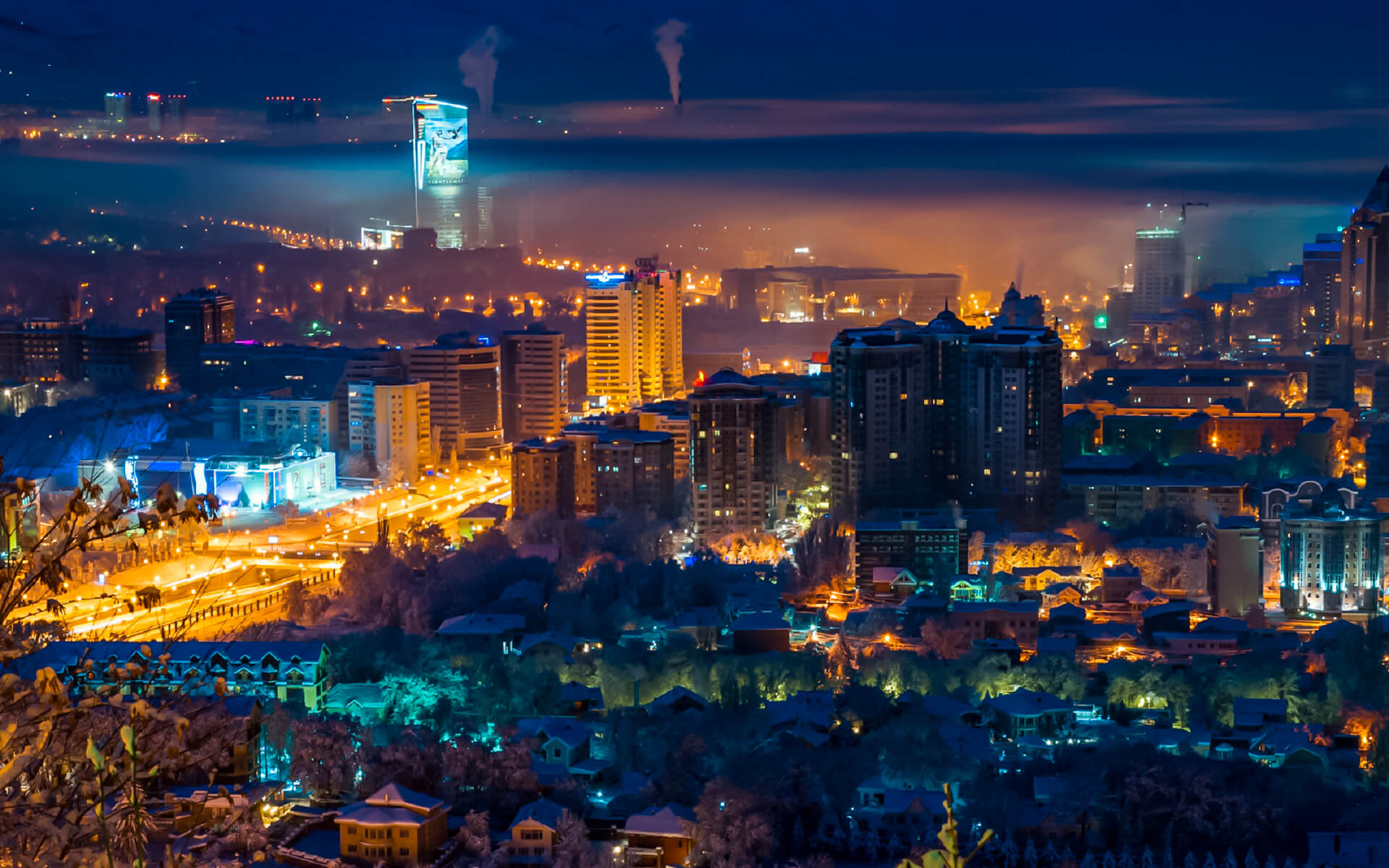Almaty, in Almaty Province, is Kazakhstan’s former capital and the country’s biggest city, as well as its financial and cultural hub. It is an ancient city that was formerly one of the key hubs of the Silk Road’s Zhetysu area.
On a clear day, the city’s doorstep to the south is framed by the stunningly craggy, snow-capped mountains. The city, in general, slopes from south to north, making it easier to navigate the streets. If you’re travelling south, you’re going upwards. To the east, there is a tiny mountain range that borders the city.
Almaty has a reasonably significant expatriate population and is on the itinerary of most visitors in the area since it is an important hub not just for Kazakhstan but for Central Asia as a whole.
According to Mercer Human Research, Almaty is one of the top 50 most expensive cities in the world for expats. Almaty fell from 30th to 44th in 2008, yet it is still more costly than Toronto, Los Angeles, or Hamburg. Nonetheless, it provides a fantastic entryway to this unexplored and unique nation. The Kazakh people are very kind and inviting, and you will be pleasantly surprised by their generosity.
If you can read English and do not have a guide-interpreter in Almaty, you may purchase Pogulay, an useful handbook written in English and Russian and available at newsstands. It costs $3 and includes photographs and details of all the attractions.
- Tourist Information Office, Kurmangazy street 33 (M. Auezov house museum). The government operates an official tourist information center.
Almaty has a humid continental climate with hot summers and frigid winters. It is distinguished by the impact of mountain-valley circulation. This is particularly noticeable in the city’s northern outskirts, which sits right on the transition zone between the mountain slopes and the plains.
The annual average air temperature is 10 °C (50 °F), with January being the coldest month at 4.7 °C (24 °F) (on average), and July being the hottest at 23.8 °C (75 °F) (on average). Frost typically begins about 14 October and ends around 18 April, with prolonged severe cold from around 19 December to around 23 February, a period of roughly 67 days. Temperatures exceeding 30 °C (86 °F) are typical for around 36 days each year. Almaty, like any major city, has a “heat island” — the average daily temperature difference between the city’s northern and southern suburbs is 3.8 percent in the coldest and 2.2 percent in the warmest five days. As a result, frost in the city center begins 7 days later and ends 3 days sooner than in the northern suburbs. The annual precipitation ranges between 650 and 700 mm (25.6 to 27.6 in). The wettest months are April and May, when the city receives almost one-third of its yearly precipitation.
Snow and a cold snap are not unusual in Almaty as late as the end of May. Such snowfalls, for example, have been documented on 13 May 1985, 1 May 1989, 5 May 1993, and 18 May 1998 in the previous quarter century. Almaty saw its most recent snowfall on June 17, 1987.
Despite heavy snowfall and cold temperatures, Almaty sometimes receives winter rain. The most notable winter rain occurred on December 16, 1996, during a military parade commemorating the Republic’s 5th anniversary of independence.
The GM of the Almaty Weather Station typically records south-easterly wind (30%), and its resistance rises during the summer (37%) and diminishes during the winter (19 percent ). On average, wind speeds surpass 15 m/s around 15 days each year.
Almaty contributes over 20% of Kazakhstan’s GDP (or $36 billion in 2010). The country has the most strong economy in Central Asia, and Almaty is a major financial hub. According to the 2012 GaWC survey, it is classified as a Beta- Global City.
Finance is one of Almaty’s main businesses, and its financial exports contribute significantly to Kazakhstan’s balance of payments. Almaty is home to BTA Bank, Central Asia’s biggest bank, Kazkommertsbank, and other important banks. Almaty is the home of the Kazakhstan Stock Exchange.
Almaty is likewise establishing itself as a regional financial and economic hub (RFCA).
The ‘Almaty Financial District and Esentai Park’ is currently under development. T.J. Gottesdiener designed this as well as the World Trade Center in New York City and the Time Warner Center in Tokyo Midtown. Its ambition is to become Central Asia’s biggest business center. The Esentai Tower, a 37-story skyscraper in the park, is Kazakhstan’s highest mixed-use building, holding offices for firms like as Ernst & Young, HSBC, and Credit Suisse. The first Ritz-Carlton Hotel in Kazakhstan opened at Esentai Tower in 2013.
Almaty is home to a slew of media enterprises, in addition to professional services. Since 2006, the media distribution sector has been significantly expanding. Almaty is home to the major TV networks KTK and NTK, as well as various national publications.
There are proposals to build a motorway connecting Western Europe and Western China that will pass through Almaty. Almaty’s new airport is expected to handle 45 million tonnes of cargo per year. Air Astana is based in Almaty at the Air Astana Centre 1. Air Kazakhstan and Kazakhstan Airlines were both based in Almaty prior to their demise.
The economy of Almaty and the Almaty Region is expanding and is predicted to develop at a rate of almost 6% each year until 2020. The city accounts for almost 20% of the national GDP. To address the rapidly rising electrical demand generated by this increase, Kazakh authorities opted to modernize the power infrastructure by constructing a new transmission line and renovating substations. The Alma Transmission Project, funded by the World Bank, has contributed to this achievement.
While free wifi is prevalent in hotels, it might be inconsistent. Free wifi is available at several pubs and restaurants.


